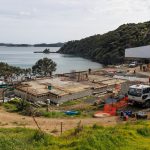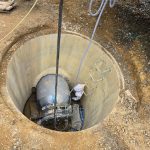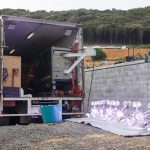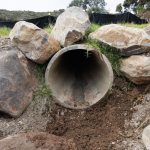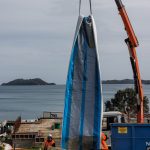The beauty of Brandenburger’s UV liners
Recently named by National Geographic magazine as one of the top 25 places in the world to visit in 2025, Northland has a lot to offer. Among its attractions; abundant wildlife, a marine playground and spectacular views.
On the secluded stunning Parekura Bay, a luxury residence building site had the unwanted potential threat of an ageing concrete stormwater pipe.
TDG Environmental, Australasian environmental experts, were contracted by the high-end builder, Mather Builders, to provide the best solution.
TDG Environmental Senior Project Manager, Andrew Twentyman, says as part of the scope of work, the pipe had been inspected by camera, and was found to be leaking. “It needed to be sealed and futureproofed.”
A trenchless (also known as keyhole), solution saw two UV-cured 750mm Brandenburger liners from BurrowTech installed, back to back.
Andrew says the main concern during the project, as always, was making sure nothing entered the waterways through delivery of the project.
As planned, everything went without a hitch.
“The whole project was completed within three days. It saved a lot of time compared to conventional open cut methods (otherwise it could be up to two weeks). And it all went according to plan.”
Andrew says the liners will extend the pipe’s design life by 50 years and expected service life by 100 years.
Hayden Powell from BurrowTech says Brandenburger’s UV Liner offer a unique manufacturing process that allows the liner to expand effectively preventing creases or wrinkling. “Using the UV-cured, resin-impregnated glass-fibre, they create a fully structural pipe within the existing pipe, without reducing pipe flow capacity due to the improved smoothness. They avoid disruption, and you’ve got immediate commissioning after completion. That speeds things up a heap and saves money.”
Hayden says Brandenburger’s patented winding technology has produced more than 7,000,000 m of liners worldwide over the past 20 years. “It’s setting the standard and changing our whole industry.”
Ideal for condensed cities or remote sites, such as Parekura Bay, trenchless systems reduce emissions by approximately 80 to 85% compared with a trenched approach and excavated materials, additional equipment use, and transport needs, are cut to almost zero.
